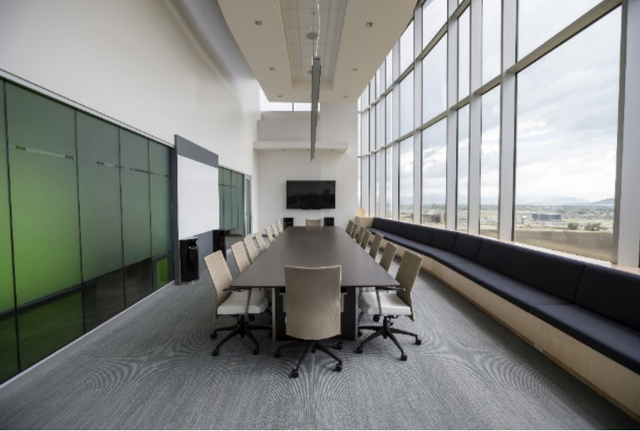CDE project 23: part 2 — project 7 — 10
- Written by
- The Commission on the Donor Experience
- Added
- March 29, 2017

Large national charities will almost certainly have staff teams assigned to cause-related marketing, or they may hire consultants who specialise in securing corporate support. Such skilled people are often beyond the budgets of small charities, but don’t be put off because you are a small local charity; you can still get corporate support. This project offers some good advice, and some that can be very easily applied in a smaller charity environment.
Three things to consider/prioritise:
- Don’t call it corporate fundraising – call it corporate partnerships. Adopt a ‘what’s in it for us, what’s in it for them’ mentality. Find out what the company objectives, values and aims are. You can do much of this before your first meeting, but make this the first thing that you discuss at a face to face meeting. Listen and then reflect on what you as a small charity can realistically offer. Make sure that you can evidence the impact that the work you do has and the impact that this has in their community. Don’t over promise. (Short term 6 & 8)
- Inspire decision makers into wanting to be part of a long term goal. Companies choose charities for emotional reasons, then they justify their decision with commercial benefits. Give them the opportunity to see the work if possible and meet some beneficiaries and programme/service delivery staff. (Short term 5)
- Explore existing connections. Have a session with trustees – ask the questions: 'What's our big challenge over the next 3 years and which company (local or a branch of a large company) could help us solve that challenge?'. Dig into who might have contacts to start a conversation, and equip that person with the right way to approach it.

A big issue for small charities here is capacity as fundraisers are often working across multiple disciplines, but the principles and recommendations in this project are helpful for charities of all sizes. Rather than just providing a tick-box list of things you must do, it offers insight into the relationship between trust and charity, and allows the fundraiser to think about the process in a more personal way.
Three things to consider/prioritise:
- Small charities can have an advantage using their smaller, flatter structure here. Getting access to senior staff and trustees where needed for key meetings can often be easier than in larger organisations with layers of hierarchy. Involve senior management, trustees and service delivery staff - even beneficiaries if appropriate. Small charities can often be more flexible and responsive to requests from funders – encourage them to see the impact of their support or the need first hand if possible. (Practical Actions 11)
- The biggest issue for small charities is capacity. Often those fundraising are doing so as part of another role, and are often not experienced fundraisers. Consider utilizing volunteers to undertake research to find out about the trust and its trustees, and make sure you meet their criteria and make it easy for the trust – don’t send random applications if you are not eligible, it creates more work for the trust. (Practical Action 3)
- Remember that the people behind trust decisions are people. Treat them as if they are an individual donor. Those making the decisions are volunteers themselves and support charities because they believe in their cause, we need to be mindful of this when thanking them and reporting back on our projects. (Practical Actions 8 & 16).

Major donor programmes can be a valuable asset – and sometimes important lifelines - for small charities, however there are often challenges in managing and developing them. There are some good basic concepts within this project, presented in an accessible way for charities of all sizes. That said, there are some specific things that small charities should consider when either embarking on, or developing an existing major donor programme to ensure that providing a great donor experience aligns with the bigger picture of the mission.
Three things to consider/prioritise:
- Agree the definition of a major donor and what this means for both the charity and the donor. Often in smaller more local organisations a major donor will want to be more involved than perhaps in a larger national organisation. To ensure a smooth donor experience, expectations and boundaries should be set. (Principle 1)
- Small charities should consider how seniority is important to high net worth individuals. Where there is only one fundraiser, it is often the CEO who should be taking on major donor relationships. They want confidence that they are valued and listened to. When applying a major donor programme in a small charity it is essential that you have a leader who can facilitate these relationships and make things happen. (Principle 5)
- Whilst the donor experience is important, it should be noted that there is a risk in a small organisation - where the fundraisers are also programme staff and/or leaders - that partnering with major donors results in the mission or focus of the charity being unduly influenced by big money. Setting boundaries and guidelines from the outset can support pushing back on such requests. (Principles 2 & 8)

Small charities should be encouraged that they are well placed to take advantage of much of the reports recommended direction. However, legacy income for small charities is highly volatile from year to year. Consider using any unrestricted legacy funds for capital developments or new projects that would be non-recurrent funds, not to pay for routine operating costs.
Three things to consider/prioritise:
- Spend time developing and inspiring legacy message – involve as many people in the organisation. There are some great tips in the project of what to consider here and a number of the 29 recommendations can point in the right direction. Make sure that the message is consistent with the overall organisation message. ( Principle 2, Recommendations 8, 9, 10,11, 13, 24).
- Small charities are well placed to have close, personal and face to face interactions with their supporters. Engagement events, exposure to senior management, and personal relationships are all possible for small charities and these are all key drivers of legacy gifts. (Principle 1, 10 & 11/ Recommendations 3, 5, 21)
- Low cost opportunities presented by technology and social media are as open to small charities as they are to large. While the scale may be different, with a clearly articulated legacy vision and consistent messaging, the suggestions around the use of technology can be very applicable for small charities. (Principles 3 and 7, Recommendations 22, 23).


















